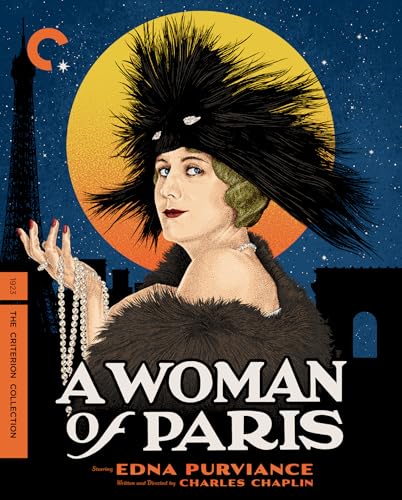 A Woman of Paris Blu-Ray (Criterion Collection) | Blu Ray | (07/04/2025)
from £22.99
| Saving you £N/A (N/A%)
| RRP
A Woman of Paris Blu-Ray (Criterion Collection) | Blu Ray | (07/04/2025)
from £22.99
| Saving you £N/A (N/A%)
| RRP Remarkable for its psychological nuance and its boldly modern perspective on an independent woman's search for fulfillment, Charlie Chaplin's long-overlooked silent masterpiece A Woman of Paris is a revelation.
![The Great Dictator [DVD] [1940]](/pictures/1099871.jpg) The Great Dictator | DVD | (10/05/2010)
from £N/A
| Saving you £N/A (N/A%)
| RRP
The Great Dictator | DVD | (10/05/2010)
from £N/A
| Saving you £N/A (N/A%)
| RRP Chaplin plays two characters in his first full talkie. Adenoid Hynkel the dictator of Tomania and a Jewish Barber. The Barber recovers from amnesia to discover Hynkel is persecuting all the Jews in his country. The film ends with a message of hope for the world.
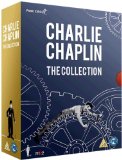 Chaplin DVD Box Set (Chaplin Collection) | DVD | (14/11/2011)
from £N/A
| Saving you £N/A (N/A%)
| RRP
Chaplin DVD Box Set (Chaplin Collection) | DVD | (14/11/2011)
from £N/A
| Saving you £N/A (N/A%)
| RRP A must-have for Charlie Chaplin fans - this DVD Box Set contains a collection of much-loved classic films: The Chaplin Revue, The Circus, City Lights, The Gold Rush, The Great Dictator, The Kid, A King in New York, Limelight, Modern Times, Monsieur Verdoux and A Woman of Paris. Extras include: Behind-the-scenes footage Deleted scenes Documentaries Introductions Outtakes Photo galleries Trailer reels NB A King in New York, Monsieur Verdoux and A Woman of Paris have not previously been released in Park Circus’ Charlie Chaplin Collection
![Modern Times (Chaplin Collection) [DVD]](/pictures/1105510.jpg) Modern Times (Chaplin Collection) | DVD | (14/02/2011)
from £N/A
| Saving you £N/A (N/A%)
| RRP
Modern Times (Chaplin Collection) | DVD | (14/02/2011)
from £N/A
| Saving you £N/A (N/A%)
| RRP In Modern Times one of Charles Chaplin's most popular films The Tramp struggles to live in a modern industrial society with the help of a young homeless woman. played by Paulette Goddard. The film is both the last of The Tramp films and the last silent film Chaplin made and is another masterful mix of drama social comment and wonderful comedy.
![The Kid [DVD] [1921]](/pictures/1099870.jpg) The Kid | DVD | (10/05/2010)
from £24.28
| Saving you £-8.29 (-51.80%)
| RRP
The Kid | DVD | (10/05/2010)
from £24.28
| Saving you £-8.29 (-51.80%)
| RRP The Tramp and an abandoned child (6 year old Jackie Coogan) triumph over life's hard knocks in the landmark film that changed the notion of what a screen comedy could be.
![City Lights [Blu-ray]](/pictures/1103454.jpg) City Lights | Blu Ray | (15/11/2010)
from £24.28
| Saving you £-4.29 (N/A%)
| RRP
City Lights | Blu Ray | (15/11/2010)
from £24.28
| Saving you £-4.29 (N/A%)
| RRP Made in 1931 shortly after the introduction of the talkies, Charlie Chaplin's City Lights is nonetheless near-silent. Chaplin was afraid that, should his universally known and beloved Tramp speak onscreen, he would be severely limited and compromised as a character. And so, City Lights is billed as "pantomime", a piece of cinema harking back to the manners and methods of an already defunct era. Chaplin fell out of fashion towards the end of the 20th century as a new wave of comedians (Rowan Atkinson for one) castigated him for what they saw as his excessive, maudlin sentimentality. Certainly, City Lights--which sees Chaplin's Tramp befriended by a blind flower girl who mistakes him for a rich benefactor--is hokum indeed. Accepting this, however, what makes the film so marvellous is the deceptive skill and artistry of Chaplin the filmmaker, the immaculate timing and acrobatic grace of his seemingly slapstick comedy, in particular a justly famous boxing sequence. Chaplin's sparing use of sound is inventive also: the wordless waffle of public speakers in the opening scene and another in which the tramp swallows a whistle. Moreover, the conclusion, in which the dishevelled Tramp encounters again the flower girl, her eyesight restored is--sentimentality notwithstanding--one of the most moving and superbly executed scenes in cinema history, not least for its economy and restraint. On the DVD: City Lights contains a generous package of extras on this two-disc set, including an introduction by David Robinson, in which he relates how poorly Chaplin and his leading lady Virginia Cherrill got on, an extended documentary/interview with Peter Lord (partner in animation to Nick Parks), who sings the praises of Chaplin's screen art, and a deleted scene, an immaculate piece of business involving a grate and a stick. There's a bonus in the form of an excerpt from 1915's The Champion, in which Chaplin prefigures the boxing scene from City Lights. Meanwhile, the "documents" section includes a wealth of behind-the-scenes footage, including a test screening for alternative actress Georgia Hale, rehearsal shots, chaotic scenes of Chaplin being mobbed in Vienna, a meeting with Winston Churchill and 1918 footage of Chaplin horsing around with famous boxers of the day including Benny Leonard. It also contains trailers, photo gallery and subtitles. On the first disc, the film's transfer to DVD is splendid. --David Stubbs
![Modern Times - Dual Format Edition [Blu-ray] [1936]](/pictures/1101723.jpg) Modern Times - Dual Format Edition | Blu Ray | (23/08/2010)
from £22.99
| Saving you £-3.00 (-15.00%)
| RRP
Modern Times - Dual Format Edition | Blu Ray | (23/08/2010)
from £22.99
| Saving you £-3.00 (-15.00%)
| RRP In Modern Times one of Charles Chaplin's most popular films The Tramp struggles to live in a modern industrial society with the help of a young homeless woman. This Dual Format Edition (Blu-ray and DVD) includes the 1936 feature which has now been restored in high definition.
 Mary Martin & Ethel Merman - the Ford 50th Anniversary Show | DVD | (01/11/2004)
from £18.97
| Saving you £-0.98 (N/A%)
| RRP
Mary Martin & Ethel Merman - the Ford 50th Anniversary Show | DVD | (01/11/2004)
from £18.97
| Saving you £-0.98 (N/A%)
| RRP Mary Martin And Ethel Merman - The Ford 50th Anniversary Sho
![The Circus [Blu-ray]](/pictures/1103455.jpg) The Circus | Blu Ray | (15/11/2010)
from £29.14
| Saving you £-9.15 (-45.80%)
| RRP
The Circus | Blu Ray | (15/11/2010)
from £29.14
| Saving you £-9.15 (-45.80%)
| RRP The Little Tramp brings his slapstick hijinks to the big top. Charlie Chaplin's film The Circus begins in a fading circus where the equestrienne can't jump the hoops and the clowns can't make the audience laugh. Outside on the midway The Little Tramp falls into a series of wonderful comic routines that end when pursued by a cop he bursts into the tent's centre ring and wows the audience. The circus owner/ringmaster auditions The Little Tramp as a clown but discovers he is only funny when he isn't trying. He tricks The Little Tramp into joining the circus as a prop man who wreaks havoc with whatever he does and who unknowingly becomes the star of the show...
![Charlie Chaplin Marathon - Vol. 2 - A Dog's Life / The Kid / Behind The Screen [1918]](/pictures/1013181.jpg) Charlie Chaplin Marathon - Vol. 2 - A Dog's Life / The Kid / Behind The Screen | DVD | (09/02/2001)
from £N/A
| Saving you £N/A (N/A%)
| RRP
Charlie Chaplin Marathon - Vol. 2 - A Dog's Life / The Kid / Behind The Screen | DVD | (09/02/2001)
from £N/A
| Saving you £N/A (N/A%)
| RRP Featuring 'A Dogs Life' and 'The Kid' and 'Behind The Screen'.
![The Gold Rush - Dual Format Edition [Blu-ray] [1925]](/pictures/1101721.jpg) The Gold Rush - Dual Format Edition | Blu Ray | (23/08/2010)
from £24.28
| Saving you £-4.29 (N/A%)
| RRP
The Gold Rush - Dual Format Edition | Blu Ray | (23/08/2010)
from £24.28
| Saving you £-4.29 (N/A%)
| RRP A lone prospector ventures into Alaska looking for gold. He gets mixed up with some burly characters falls in love with the beautiful Georgia and tries to win her heart with his singular charm. This Dual Format Edition (Blu-ray and DVD) includes both versions of The Gold Rush - the 1925 silent original restored by Kevin Brownlow and the digitally restored 1942 film (in 1942 Charles Chaplin took the 1925 original composed and recorded a musical score for the film added narration and re-edited)
![The Chaplin Revue - Restored Edition [DVD]](/pictures/1103456.jpg) The Chaplin Revue - Restored Edition | DVD | (15/11/2010)
from £21.58
| Saving you £-5.59 (-35.00%)
| RRP
The Chaplin Revue - Restored Edition | DVD | (15/11/2010)
from £21.58
| Saving you £-5.59 (-35.00%)
| RRP The Chaplin Revue - Restored Edition
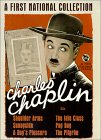 Charles Chaplin: A First National Collection | DVD | (14/03/2000)
from £N/A
| Saving you £N/A (N/A%)
| RRP
Charles Chaplin: A First National Collection | DVD | (14/03/2000)
from £N/A
| Saving you £N/A (N/A%)
| RRP ![Charlie Chaplin - Gold Rush [1925]](/pictures/1012277.jpg) Charlie Chaplin - Gold Rush | DVD | (22/09/2003)
from £N/A
| Saving you £N/A (N/A%)
| RRP
Charlie Chaplin - Gold Rush | DVD | (22/09/2003)
from £N/A
| Saving you £N/A (N/A%)
| RRP Chaplin's personal favourite among his own films, The Gold Rush embodies all the trademarks of his mix of slapstick, satire, social commentary and sentiment--a perfect showcase for his ever-popular Little Tramp. Set during the Klondike Gold Rush in 1898, the film features a comic reworking of the gruesome Donner Party story, where a group of snowbound immigrants resorted to eating their clothes and then each other to stay alive. It opens with a grand shot of gold prospectors snaking up the side of a mountain. We then see the Tramp, typically estranged from the rest of the group, making his own way across the snow. Seeking shelter in a blizzard, he finds the cabin of the dangerous criminal Black Larson (Tom Murray) and when another prospector, Big Jim McKay (Mack Swain), comes along, the two of them take charge of the cabin and eventually drive him out. Starving on Thanksgiving, the pair decide to dine in style when the Tramp cooks one of his shoes, famously acting as if he's cooking a fine piece of meat; twirling the laces up like spaghetti and savouring every last nibble. When he finally escapes, the Tramp ends up in a local town and falls in love, only to be rebuffed on New Year's Eve. When a chance meeting reunites him with Big Jim, the two go back in search of gold hidden near the cabin. Despite its unlikely origins, the story is shaped into a classic comedy containing many famous set-pieces, including the cabin teetering on the edge of a cliff and the Tramp morphing into a chicken before the starving Big Jim. Ultimately it's Chaplin's endearing and amusing persona that makes this material genuinely enduring. On the DVD The Gold Rush comes to DVD in a decent transfer with good mono sound and the option of Dolby Digital 5.1. The second disc of bonus features opens with an introduction by David Robinson, who chronicles Chaplin's work on the film, which was interrupted when his clandestine affair with his 15-year-old leading lady meant that, due to her becoming pregnant, the filming had to close for a few months while a new female lead was found. The original 1925 version of the film, before Chaplin updated it with the addition of sound in 1942, appears in full. The Chaplin Today documentary illustrates the influence of the film on director Idrissa Ouedraogo from Burkina Faso, whose own work follows similar themes, as well as going behind the scenes on the original production. Trailers, posters and stills round off this worthy addition to the Chaplin Collection. --Laura Bushell
![Charlie Chaplin - Modern Times [1936]](/pictures/1012282.jpg) Charlie Chaplin - Modern Times | DVD | (01/06/2006)
from £N/A
| Saving you £N/A (N/A%)
| RRP
Charlie Chaplin - Modern Times | DVD | (01/06/2006)
from £N/A
| Saving you £N/A (N/A%)
| RRP Modern Times marks the last proper appearance of Charles Chaplin's iconic Little Tramp, and finds our hero struggling to make ends meet in the Depression of the 1930s. Along the way he takes up with a juvenile delinquent (actually 24-year-old Paulette Goddard) and plays a prison incident with "nose powder" for drug-induced laughs--both plot elements seeming quite innocent here, though both would provoke controversy today. Modern Times' most famous sequences portray the dehumanisation of factory labour to fine comic effect, balancing satire with slapstick to perfection in several superbly executed set-pieces. While the film has sound-effects and musical score, speech is only presented through mechanical means, via a gramophone, or through wall-sized TVs far more futuristic than in those in HG Wells' Things to Come (also 1936)--it's an interesting footnote that the comic and the SF visionary were friends. Chaplin famously not being a fan of sound cinema acknowledges the need to move with the times, yet hilariously spoofs the exploitation of man and machine while doing so. Amid some great laughs, the political message comes though clearly: the boss is making a fortune while doing jigsaw puzzles in his luxury office, the workers are toiling ever harder on the production line for their pittance. On the DVD: Modern Times is offered in the original 4:3 black and white with good mono sound evidencing just a little distortion and a very clean, clear picture with minimal grain to give away its age. Also included are French and Italian dubbed versions and a pointless and ineffective English Dolby Digital 5.1 version of the soundtrack. The disc features multiple subtitle options, including English for hard of hearing. Disc Two begins with a six-minute introduction by David Robinson. Next comes a very worthwhile 26-minute documentary by Philippe Truffault, Chaplin Today, centred around a perceptive subtitled discussion between French filmmakers Luc & Jean-Pierre Dardenne. There are three trailers, beautifully reproduced posters, an eight-part photo gallery and one entertaining deleted scene, as well as Chaplin's "nonsense song" from the film in isolated form and in a "Karaoke" version. The Documents section begins with a silent 42-minute 1931 documentary/propaganda film, In the Machine Age made by the US Dept of Labor. Along similar but more entertaining lines is Symphony in F a 1940 colour film combining music, manufacturing footage and animation celebrating the Ford motor company, while also included is a sequence from the Liberace Show (1956) with the star performing the vocal version of "Smile", the theme from Modern Times. Demonstrating the truly universal appeal of Chaplin is a 1967 short For the First Time, documenting what happens when the people of the remote Baracoa mountains in Cuba see their first ever movie, Modern Times. This is a remarkable collection which does a great film justice. --Gary S Dalkin
![Charlie Chaplin - Monsieur Verdoux [1947]](/pictures/1012275.jpg) Charlie Chaplin - Monsieur Verdoux | DVD | (22/09/2003)
from £N/A
| Saving you £N/A (N/A%)
| RRP
Charlie Chaplin - Monsieur Verdoux | DVD | (22/09/2003)
from £N/A
| Saving you £N/A (N/A%)
| RRP This blistering little black comedy was well ahead of its time when released in 1947. Originally Orson Welles had wanted Chaplin to star in his drama about a French mass murderer named Landru but Chaplin was hesitant to act for another director and used the idea himself. He plays a dapper gent named Henri Verdoux (who assumes a number of identities) a civilised monster who marries wealthy women then murders them (as we meet him he's gathering roses as an incinerator ominously bel
![Charlie Chaplin - Modern Times [1936]](/pictures/1012153.jpg) Charlie Chaplin - Modern Times | DVD | (17/11/2003)
from £N/A
| Saving you £N/A (N/A%)
| RRP
Charlie Chaplin - Modern Times | DVD | (17/11/2003)
from £N/A
| Saving you £N/A (N/A%)
| RRP Chaplin's last 'silent' film filled with sound effects was made when everyone else was making talkies. Charlie turns against modern society the machine age (the use of sound in films?) and progress. Firstly we see him frantically trying to keep up with a production line tightening bolts. He is selected for an experiment with an automatic feeding machine but various mishaps leads his boss to believe he has gone mad and Charlie is sent to a mental hospital... When he gets out he is mistaken for a communist while waving a red flag sent to jail foils a jailbreak and is let out again. We follow Charlie through many more escapades before the film is out.
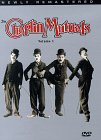 Chaplin Mutuals, Vol. 1 | DVD | (19/11/1997)
from £N/A
| Saving you £N/A (N/A%)
| RRP
Chaplin Mutuals, Vol. 1 | DVD | (19/11/1997)
from £N/A
| Saving you £N/A (N/A%)
| RRP 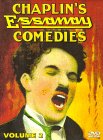 Chaplin's Essanay Comedies, Vol. 2 | DVD | (28/09/1999)
from £N/A
| Saving you £N/A (N/A%)
| RRP
Chaplin's Essanay Comedies, Vol. 2 | DVD | (28/09/1999)
from £N/A
| Saving you £N/A (N/A%)
| RRP ![Charlie Chaplin - Circus [1928]](/pictures/1012276.jpg) Charlie Chaplin - Circus | DVD | (22/09/2003)
from £14.36
| Saving you £-0.37 (N/A%)
| RRP
Charlie Chaplin - Circus | DVD | (22/09/2003)
from £14.36
| Saving you £-0.37 (N/A%)
| RRP Made in 1928 while he was in the middle of a painful divorce case, Charlie Chaplin's The Circus was so associated with bad memories for its maker that he refused even to mention it in his 1964 autobiography. Consequently, it has enjoyed less of a reputation than films such as The Gold Rush (1925) and City Lights (1931). However, while it's not quite in their league, The Circus undoubtedly deserves to be rescued from relative obscurity. Here, Chaplin's Tramp is taken on as a clown at the circus, having been chased into the big tent by a policeman wrongly suspected of theft and wowing the audience with his pratfalls. He falls in love with the ill-treated ringmaster's daughter (Merna Kennedy) but is swiftly rivalled by a new addition to the circus, a handsome tightrope walker. To try to win back her affections the Tramp attempts the same act, culminating in the best sequence of the film, when he is assailed by monkeys as he totters amateurishly and precariously along a rope suspended high in the tent. Although The Circus is marred by the rather hackneyed and (even in 1928) stale melodramatic device of the cruel father and imploring daughter, it scores high on its slapstick content, with routines involving a hall of mirrors and a mishap with a magician's equipment demonstrating Chaplin's dazzling ability to choreograph apparently improvised mayhem. On the DVD: The Circus features a generous trove of extras on this two-disc set, including extracts from Lord Mountbatten's home movies of Chaplin, a deleted scene involving a prankster prize-fighter, as well as original footage showing how the perfectionist Chaplin would shoot and reshoot scenes. An introduction from David Robinson explains the adverse circumstances which held up the shooting of The Circus, including a fire and gales, which destroyed the set, while a further documentary delves into Chaplin's earliest work to provide context for the film. On the first disc, the film itself is an excellent transfer. --David Stubbs

Please wait. Loading...
This site uses cookies.
More details in our privacy policy